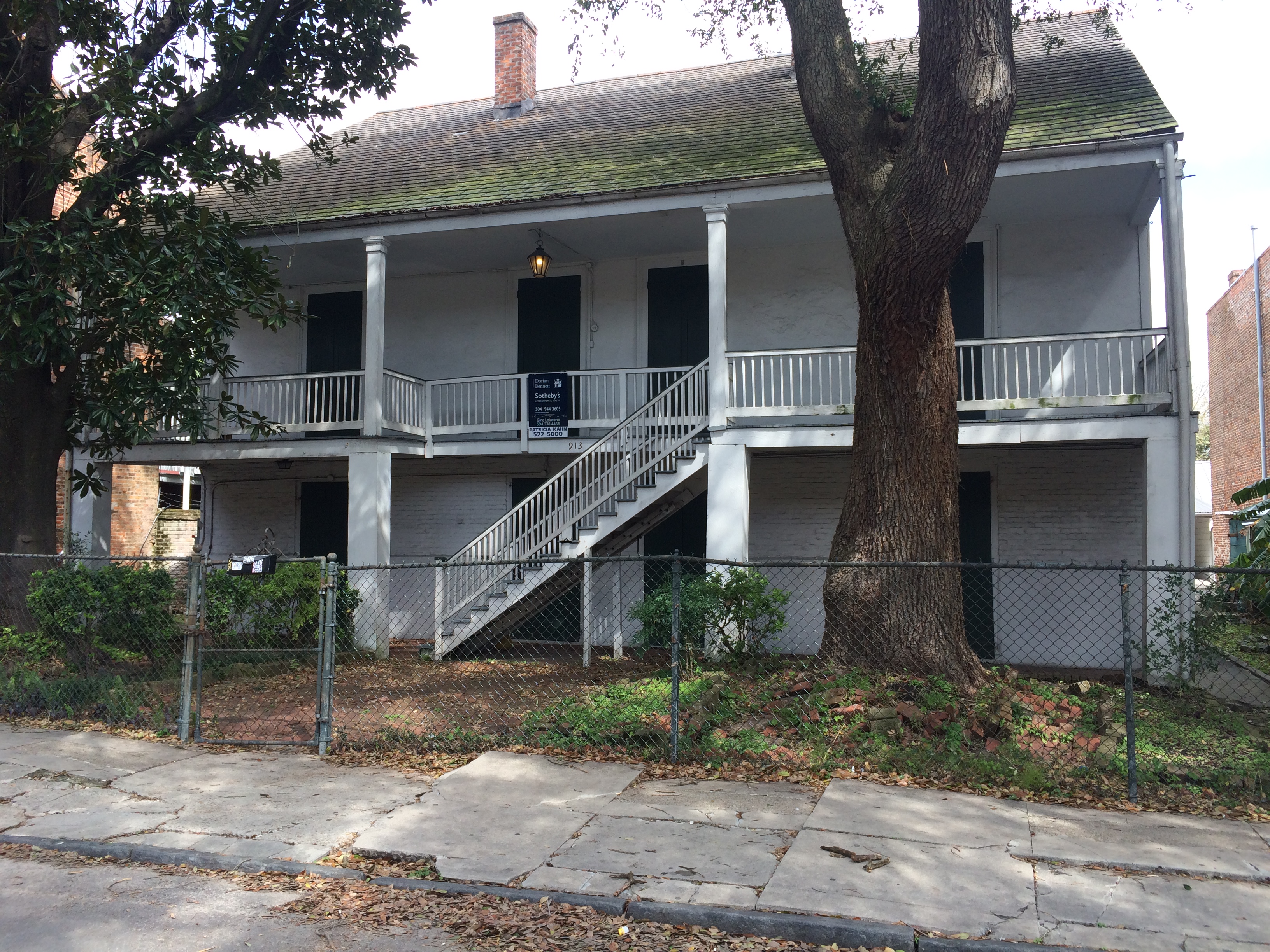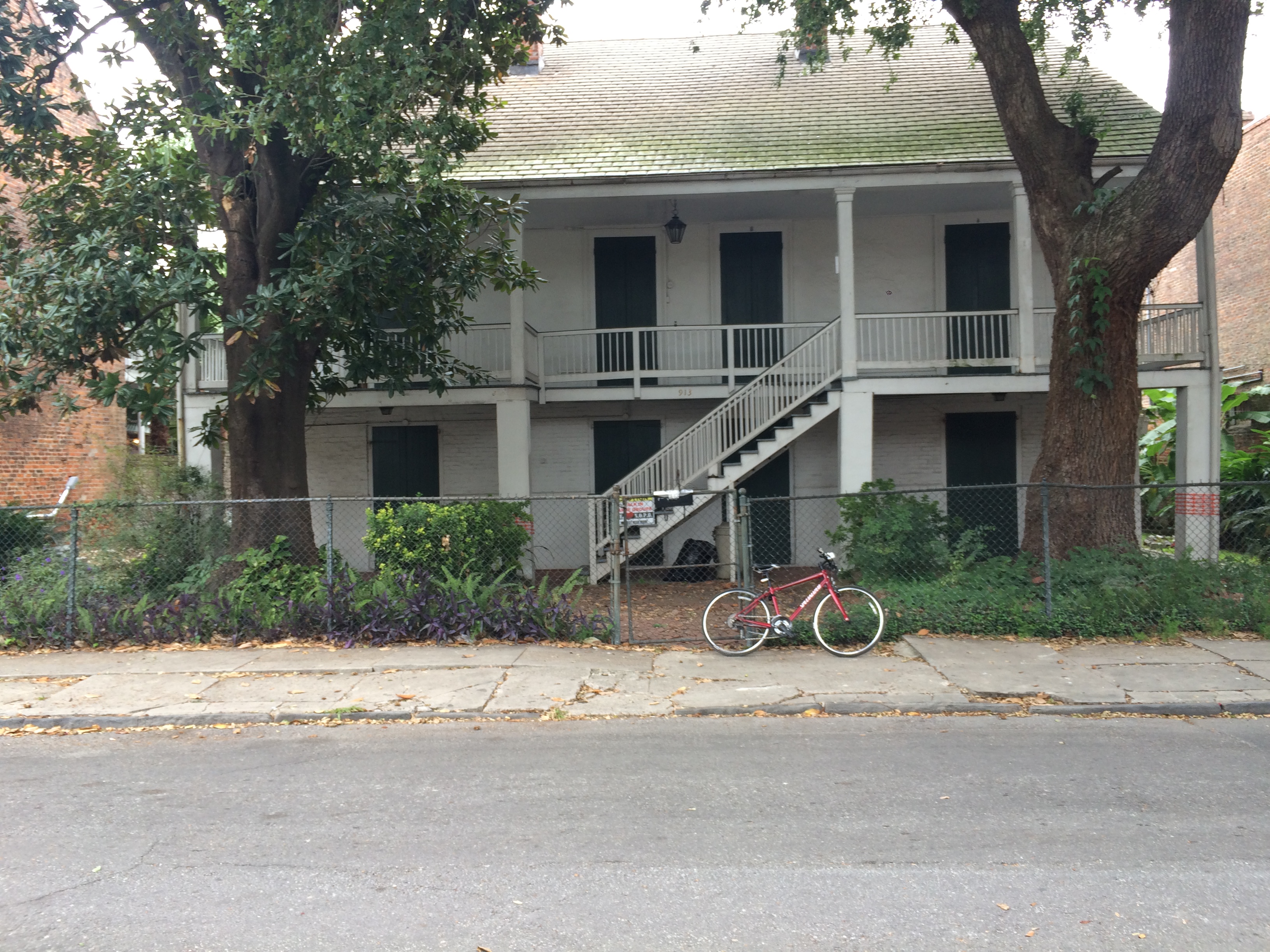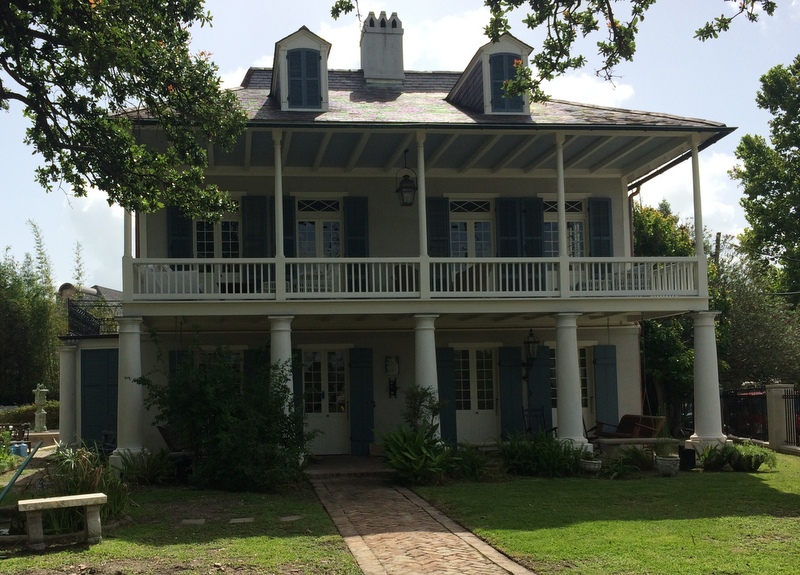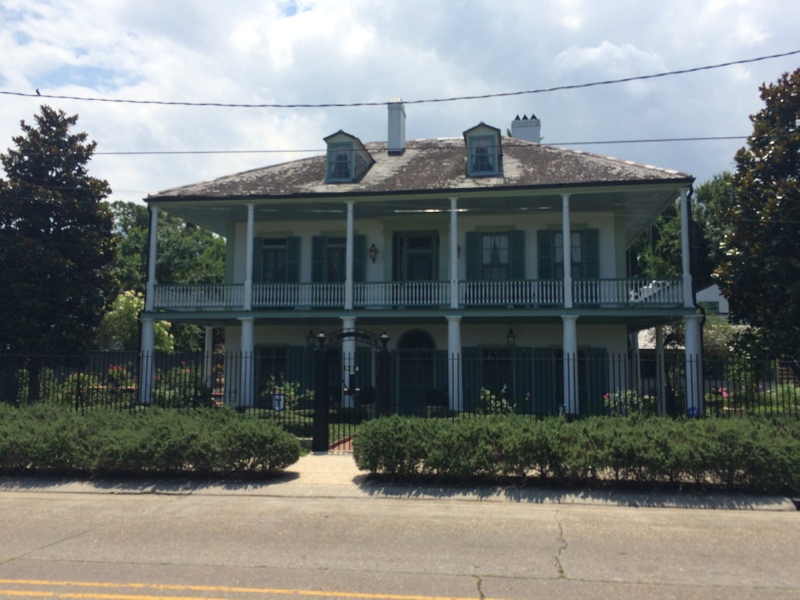
Ossorno House, 913 Gov Nicholls St, photo by author

Ossorno House, 913 Gov Nicholls St, photo by author
In the 1830s, its hipped roof (a roof with four sloped sides; see pictures of other examples below) was replaced by a gabled one, but other than that, the house still retains its French colonial plantation-style characteristics. The only other plantation-style house in the Quarter is the famous Madame John’s Legacy, but the Ossorno House is the only truly authentic plantation-style structure in the Quarter since it was actually utilized as such in a rural setting before being moved to the city. As Richard Campanella tells us in his Geographies of New Orleans, “[the Ossorno House] is over twenty-five years older than any building in the surrounding sixteen blocks, eighty years older than the area’s average age, and possibly the only structure ever to occupy its parcel.” [1]
On top of this, only three families have owned the house over the course of its 230-year history, and it hasn’t changed hands since 1912.

Colloquially-named Spanish Custom House, c. late 1700s, on Bayou St. John; photo by author; note the hipped roof

“The Sanctuary” on Bayou St. John, another French colonial plantation-style house hailing from the same era as the Ossorno House; photo by author; note the hipped roof
So, in short, we have a totally badass house here.
It witnessed the early days of bayou living—saw schooners gliding down the bayou, heavy with smuggled goods; saw fields of indigo and herds of cattle and orchards planted with rows of orange trees; maybe it even witnessed a runaway slave as she slipped silently along the bayou to hide in the cypress swamp beyond. Then, it was broken up and hauled along Bayou Road like nearly all the other goods arriving in the city at the time.
Again, Campanella sums it up elegantly: “That the Ossorno House may have literally come down Bayou Road from the Bayou St. John plantation country and ended up on Gov. Nicholls Street, where Bayou Road entered the city, is also of great significance. One may view it as a structural monument to the historic flow of materials and peoples traveling this route from city to bayou.”[2] Physical proof of the ancient artery of Bayou Road, once a stream of movement and activity, in the form of a slightly run-down plantation-style four-plex—which could be yours today for only 2.7 million dollars!
For awesome photos of the house’s current interior—six bedrooms, four baths, with a little retro kitchen tacked onto the back, and original fireplaces and wood floors—visit Curbed New Orleans.
Better yet, go visit the house! You may not notice it at first, since it’s set back from the street and tucked in between the more stately and ornate townhouses that were built up around it in the 1800s. But don’t let its modest visage fool you—this house has stories to tell!
1. & 2. Richard Campanella, Geographies of New Orleans: Urban Fabrics Before the Storm (Lafayette: University of Louisiana Press, 2006) 106.Campanella, Geographies of New Orleans, 107.